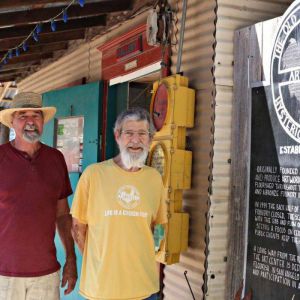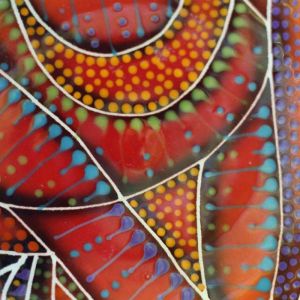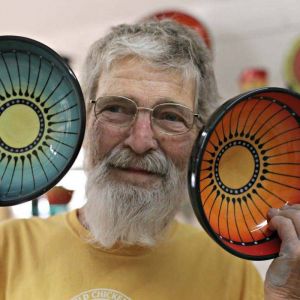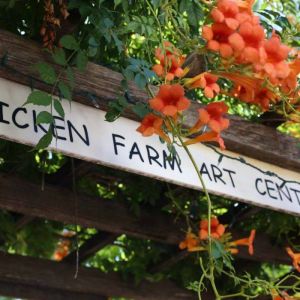And On This Farm He Has Art
The whiz of harried traffic on Martin Luther King Boulevard belies the quiet, funky commune tucked behind pencil-shaped fence pickets. The morning sun bathes the property in a rosy glow. Birds chirp, wind chimes tinkle gently in the breeze and artists – as a sign near the entrance reads – are already at play.
Story & Photography by
Becca Nelson Sankey

In 1977, Allen left teaching to focus on the Chicken Farm and his art. Eventually, his name became synonymous with the brightly-colored, whimsical pottery he creates. The Starkeeper Gallery is Southwestern with a distinct flair: a black stilted silhouette reaching for the stars, set against a bold-colored sky. The Big Ass Dancer series also features Allen’s signature vivid palette, juxtaposed with a curvaceous female form in motion.
In the 1980s, after nearly working himself to death, Allen sold the back half of the Chicken Farm. It eventually changed hands again when Jerry Warnell, a friend of Allen’s, and his wife, purchased it. Warnell, who was looking for a change of pace from his hectic career managing golf resorts, also moved in to the Chicken Farm, where Allen and his wife, Pam Bladine, live.
When I approached Warnell for our interview, he was outside unloading plants from the bed of his pickup. “It’s spring,” he said, by way of explanation.
Warnell is the Chicken Farm’s handyman, and on a 60-year old property, there’s always work to be done, he said. He’s also in charge of the Inn at the Art Center, a bed and breakfast comprised of four rooms, one of which encircles the top floor of two old grain silos. Warnell also owns Silo House Restaurant, a quaint, intimate space on the bottom level that he leases to Helen and Craig Keith.
Keith runs Silo House with her husband, her brother, daughter and mother. Previously known for its fine dining, the restaurant’s dinner menu will soon change, with more vegetarian and gluten-free options. “We’re going a lot more casual, more family-friendly,” she said.
Silo House is also moving away from its tradition of requiring reservations, she said, but parties of five or more are still encouraged to call ahead due to the restaurant’s capacity to seat just 39 people at a time.
With a laugh, he added, “We still have a very devoted following of people who probably were all students of Roger’s.”
It only takes a brief visit to understand why artists feel at home at the Chicken Farm. It’s a three-acre refuge from the outside world where art, it seems, has found its way into every nook and cranny – from the nine buildings that punctuate the property, each awash in vivid shades; to the picnic table surrounded on three sides by a 1-foot wall of mosaic tiles; to the collection of etched stone work protruding from the ground like headstones in a graveyard.
“I’m super proud of it. It’s what I dreamed about, being around other artists,” said Allen, who will soon celebrate his 75th birthday and, in a few years, the Chicken Farm’s 50th. “But it wasn’t me that built the art center. It’s a whole lot of good friends. It’s my wife and Jerry, all the artists that are here, and all the artists that have come through here. Would I do it again? In a moment.”
He laughed, then added, “Maybe.”
More from Create . . .
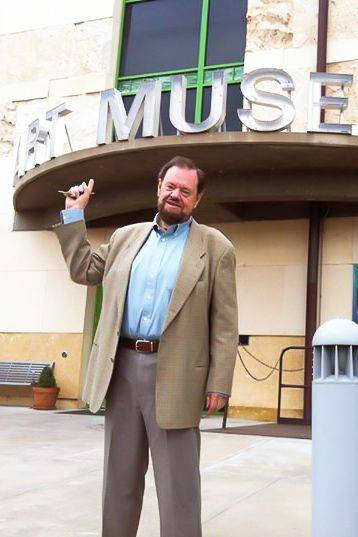
Thinking Big from Love St.
Longtime San Angelo artists have called Taylor a visionary for his efforts in revitalizing Historic City Center, a swath that encompasses the Downtown business district and the side of the Concho River near SAMFA, where San Angelo (then known as Santa Angela) was established in the 1860s.
Read More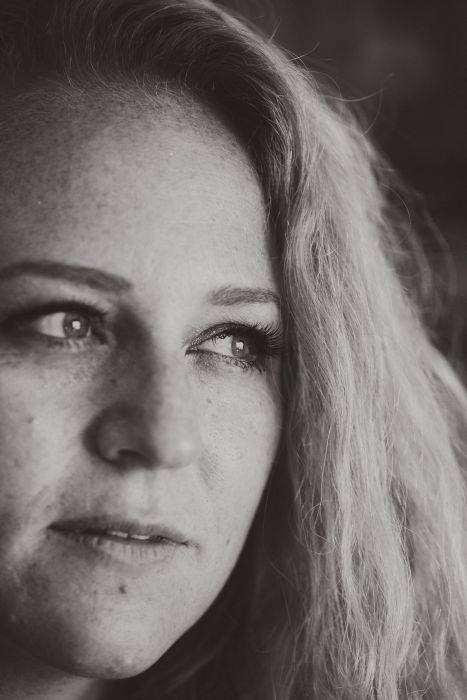
Ladies and Gentlemen: Holli Garet
Holli Garet wanted everything to be perfect. Garet was a late bloomer as a performer, but music has always been a part of her life.
Read More